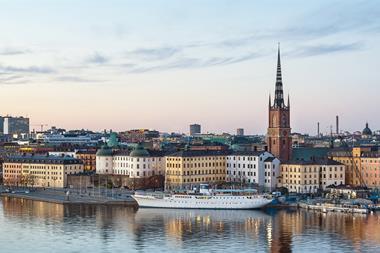EUROPE - Non-listed real estate funds have experienced a dip in both performance and the level of capital being raised, according to the INREV Annual Index 2011 and the INREV Capital Raising Survey 2012.
The reports also show that investors are heading for the relative safety of core funds in the strongest performing regions such as the UK.
The INREV Index measures annual net asset value-based performance for non-listed real estate funds investing 90% or more in Europe.
The 2011 Index covers 285 vehicles with a combined total gross asset value of €165bn.
Total returns for non-listed real estate funds have halved, from 7.4% in 2010 to 3.7% in 2011, while there has been an estimated 9% fall in capital raised year on year.
Though the best performer in Europe was France, which returned 6.8%, attention has focused on the UK.
Despite a substantial fall in total returns, from 14.9% to 5.7% - making the UK the second-best performer - there has been strong investor interest.
The Capital Raising Survey tracks the volume and value of capital raised across all fund types.
Responses came from 324 fund managers representing a combined total gross asset value of €155bn as at end-2011.
The UK was the preferred destination for investor capital in 2011, receiving €2.8bn, or 28% of total investments. Germany, in contrast, received €1.8bn.
The UK was also the most important source of capital, with investors committing €2bn, compared with the €1.3bn committed by their counterparts in Germany.
The surveys also highlight two other trends.
The INREV Index shows that core funds outperformed value-added funds with total returns of 4.3%, compared with 1.1% for value-added funds.
Similarly, the INREV Capital Raising Survey reflects a massive weighting towards core funds, for which 86% was raised, while opportunity and value-added funds attracted only 8% and 6%, respectively.
And both reports show retail as the standout sector. Though returning only 4.3% in 2011 (down from 11.7% in 2010), it still performed better than other sectors.
It also attracted the lion's share of capital from investors, with 36% of all investments made.
Casper Hesp, director of research and market information at INREV, said: "Investors seem to have stuck to strategies, countries and sectors they know and trust. In the main, they're adopting an understandably cautious approach."
The reports also uncovered some contradictory trends.
Multi-country funds returned only 2.2%, contributing to the overall poor total returns in Continental Europe.
This is partly because 19% of these funds' total assets are in southern Europe, and because of the relatively high gearing (47.3%) of multi-country funds, compared with 35.2% for the overall index.
Yet multi-country funds raised the highest level of capital - 54% of equity - according to the INREV Capital Raising Survey.
For the first time, the survey looked at debt funding alongside capital.
In total, fund managers secured €5.5bn of new loans in 2011. Most of this came from banks, with 2% from insurance companies.
Fund managers showed a willingness to seek more debt from insurance companies in the future, but ruled out specific debt funds.
Gearing levels significantly affected fund performance. Funds with more than 60% gearing underperformed those with gearing of 40% or less, at -4.5% and 5%, respectively.
And funds with gearing of between 40% and 60% showed returns of 2.4%.












